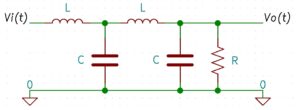The electronics industry employs millions of workers in the world. But it is only a select group of them, the electronic design engineers, who conceive the devices that are manufactured. The different specialties of electronics give rise to the corresponding electronics design specializations. And, consequently, these electronics design specializations give rise to the corresponding electronics design roles.
Below is a list of electronics design specializations. For each electronics design specialization, a brief explanation is provided and possible subspecializations are listed. In any case, to better understand each of the sections and electronics design roles, it is recommended to read our summary of electronics.
List of Electronics Design Specializations
- Circuit theory [1]:
It is an electronics design specialization necessary for all the others. It establishes the basic laws for the calculation of voltages and currents in any node and branch of an electronic circuit.

- Analog Electronics [2] [3]:
It is the branch of electronics that works with continuous voltages, not discretized, which can have “any value” within its working range. It is based on transistors, semiconductor devices that allow amplifying the power of a signal. Its main subspecializations are:- Power Electronics [4]:
Subspecialization of analog electronics that uses solid state semiconductor devices for the control and conversion of electrical power. For example, power electronics is the electronics design specialty responsible for power supplies.
- Communications Electronics [5] [6]:
Also known as Radio Frequency Electronics or Microwave Engineering. When the frequencies of the signals are high, the basic circuit theory is not sufficient to understand the behavior of the circuits. Therefore, this electronics design specialization focuses on the design of high frequency circuits, typically used in communications.
- Power Electronics [4]:

- Digital electronics:
It is the branch of electronics that works with discretized voltage values, basically ones and zeros, ‘1’s and‘ 0’s. It is based on binary logic (Boolean algebra). Its main subspecializatios are:- FPGA Design:
Digital electronics design subspecialization focused on the design of circuits with programmable logic, typically FPGAs. Sometimes these electronics design roles are defined based on the circuit description language used: VHDL engineer, Verilog engineer … - Embedded systems:
Subspecialty of digital electronics focused on the design of microcontroller-based systems. It involves programming the microcontroller with software, using machine language or a high-level language.
- FPGA Design:

- Mixed Signal Electronics:
Mixed signal electronics is situated on the border between the analog world and the digital world. Consequently, it may require a thorough understanding of both areas. Its main subspecialties are:- Signal Integrity:
Mixed signal electronics design specialization in charge of guaranteeing that very high speed binary signals are correctly transmitted between devices. When dealing with high frequencies, it is necessary to apply radio frequency engineering concepts. - Analog-to-digital and digital-to-analog conversion [7]:
Subspecialization of mixed signal electronics responsible for the conversion of analog signals into digital and vice versa. These converters, with increasing high speeds, are key pieces for communications.
- Signal Integrity:

- Optoelectronics:
Specialty that covers the elements necessary for the conversion of optical signals into electronic and vice versa. It is key to optical communications.
Subscription
If you liked this contribution, feel free to subscribe to our newsletter:
